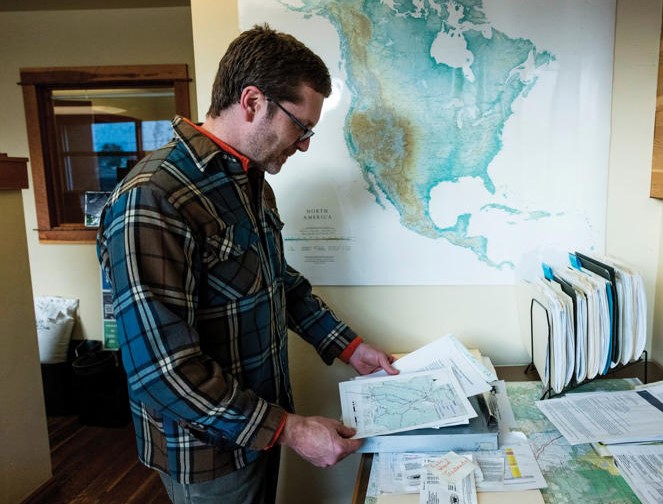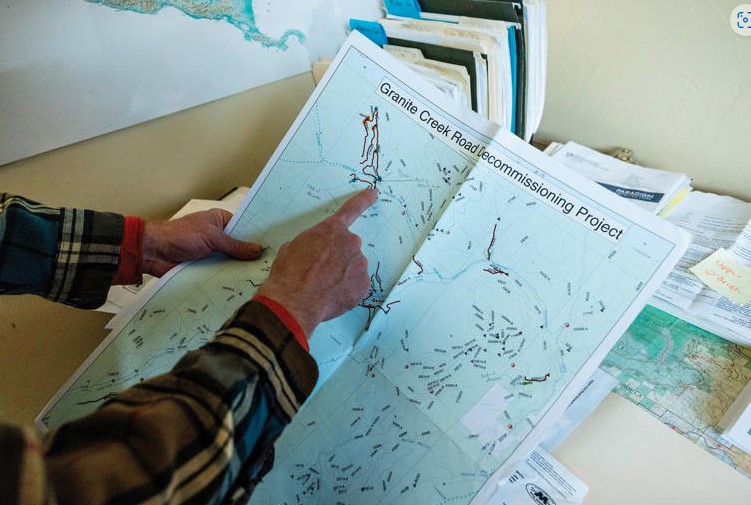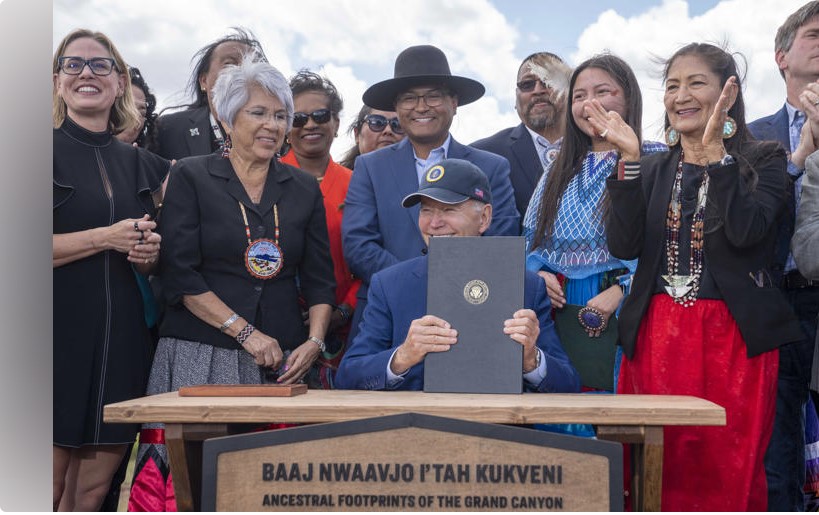Drive high enough into western Montana’s Lolo National Forest, up a succession of dirt tracks that parallel glittering creeks and twist through stands of fir and spruce, and eventually you’ll come to a clearing. At first glance it’s unremarkable, a grassy, sunlit hillside scattered with bleached tree trunks, as though a windstorm had opened the canopy.
It would be a pleasant spot to sit with your back against a lodgepole pine and watch chickadees bounce from branch to branch. What makes this clearing extraordinary isn’t what’s there now, but what once was—a road.
I visited the clearing one summer afternoon with an ecologist named Adam Switalski. Years ago, Switalski explained, large tracts of this land belonged to a private timber company, which had etched the forest with dirt roads to haul out wood. Eventually the logging operations ceased, and the company transferred its holdings to the U.S. Forest Service, which did little to deal with the derelict roads it inherited. The neglected roads plagued the forest, bleeding silt into streams and funneling disruptive humans into critical habitat for grizzlies, lynx and other sensitive species. Switalski held up his phone to display a map of the forest, across which the black lines of obsolete roads squirmed like parasites in a gut. “This is the kind of thing we’re dealing with,” he said with dismay.
The map is hardly unique. Roads, with their deadly traffic, noise pollution, chronic erosion and attendant humans, are among the most ubiquitous and powerful forces threatening our public lands and the wildlife and fragile ecosystems they contain. They point like “dagger[s] at the heart of any wilderness,” former Supreme Court Justice William O. Douglas wrote in his 1965 environmental treatise A Wilderness Bill of Rights. Today America’s roadless areas sustain more than 200 threatened and endangered species; elsewhere, they furnish strongholds for creatures like Amur tigers and African elephants. Yet these refuges are tragically scarce. In the contiguous United States, it’s impossible to get farther than 22 miles from the nearest road.
The Montana hillside on which Switalski and I now stood was a prime example of an unglamorous yet powerful tool for protecting our biodiversity—road removal, commonly known as road decommissioning. In the early 2000s, the Forest Service brought heavy machinery to this old logging road, ripping it up to permit new grasses, shrubs and trees to sprout from the stirred earth. Waist-high thimbleberry bushes now covered the slope, and Douglas fir seedlings plunged roots deep into the loosened soil. It seemed improbable that 30-ton logging trucks had ever trundled through here along a ribbon of asphalt-hard dirt. “One time, I was skiing with a buddy of mine around here and we passed an old road,” Switalski said as we wandered through the clearing. “He didn’t believe there had ever been one there. That’s the ultimate sign of success.”
Few people have seen more success than Switalski, who serves as project manager at a Montana-based nonprofit called the Clark Fork Coalition, named for the river whose watershed it serves. Over the last two decades, Switalski has guided road restoration’s best practices and demonstrated its value for species as diverse as black bears and cutthroat trout. For most of that period, however, his work, and the work of other would-be road removers, has been hampered by shoestring budgets and politicians ideologically opposed to road destruction. But a recent wave of federal legislation and programs has sparked a boom period for road decommissioning—one that could reshape America’s national forests.
“It is just the most exciting time in my career right now,” Switalski told me. “It’s a generational opportunity, if not the opportunity of a lifetime.” Road networks, like many cancers, tend toward exponential growth; today it finally seems possible that ours is about to shrink.
Homo sapiens, the legal scholar Jedediah Britton-Purdy once observed, is an “infrastructure species”—a creature defined by what it builds. And what we build, most of all, are roads. Some 40 million miles of roadways girdle our planet, four million of which enfold the United States. America’s interstate highways might be its grandest and most-trafficked routes, yet the country’s largest road network, and likely the world’s, is managed by the U.S. Forest Service, the federal agency that administers more than 190 million acres of public land. The Forest Service calls itself the Land of Many Uses—national forests are stomping grounds for timber companies, rangelands for ranchers, playgrounds for hunters and fishers—but it might be more apt to call it the Land of Many Roads. Around 370,000 road miles, the vast majority unpaved, lattice our national forests, enough to encircle Earth 15 times. READ MORE



